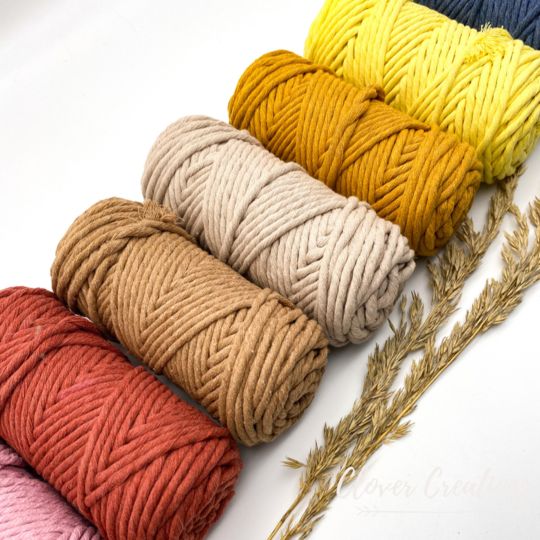Your cart is currently empty!
Macramé: A Sustainable Craft for Modern Interiors
Macramé, the art of knotting fibers into intricate patterns, has seen a resurgence in modern interiors and is a symbol of sustainability and eco-design. With its origins in ancient weaving techniques, macramé has evolved from a utilitarian craft into a highly sought-after decorative art form, celebrated for its handmade and eco-friendly qualities. As people move towards sustainable living, macrame is gaining popularity for its ability to add natural beauty and texture to homes, all while being made from eco-friendly materials. One of the main reasons why macramé is considered a sustainable craft is the use of natural, biodegradable fibers. Most macramé designs are made from materials such as cotton, jute, hemp or linen, which are renewable and have a low environmental impact. These fibers naturally decompose and leave no harmful waste, unlike synthetic materials that contribute to pollution. By choosing materials that are kind to the planet, macramé manufacturers support the growing trend towards environmentally responsible design. In addition, many artisans source their fibers from ethical, fair trade suppliers, ensuring that both the materials and the craft itself contribute to a more sustainable supply chain. Another key aspect of macrame’s sustainability is its hand-crafting. Each piece is usually made by hand, knot by knot, in a process that takes time, skill and attention to detail. This slow, deliberate process of creation stands in contrast to the mass-produced objects commonly found in modern home decor. As a result, macrame reflects the values of slow design—craftsmanship that prioritizes quality over quantity and encourages thoughtful consumption. When people choose handmade macrame, they are not just buying a product; they promote a sustainable lifestyle that prioritizes durability and art over disposable goods. In modern interiors, macramé serves as a versatile decorative element that can be easily integrated into various design styles. From boho-chic to minimalist aesthetics, macrame adds an earthy, organic touch that softens contemporary spaces. Popular items include macrame wall hangings, plant holders and room dividers that enhance the natural feel of a room. The soft, flowing textures of macramé create visual warmth and provide contrast to the clean lines and modern furniture. At the same time, the natural materials and neutral tones used in macramé designs work well with indoor greenery, making it ideal for creating eco-friendly, nature-inspired spaces. In addition to its aesthetic and ecological appeal, macramé also promotes mindful consumption. The durability of well-made macramé pieces ensures that they can last for years, reducing the need for constant replacement. As a result, these pieces contribute to a more sustainable lifestyle by encouraging people to invest in long-lasting, timeless decorations rather than short-term trends. In conclusion, we can say that macrame has become a sustainable craft that perfectly corresponds to the modern values of ecologically conscious living, craftsmanship and considerate consumption. The use of natural materials, hand-crafting and the ability to transform interior spaces with warmth and texture make it a popular choice for those looking for sustainable and stylish decor. By incorporating macramé into modern interiors, individuals can enjoy beautiful, ethical designs that reflect a commitment to both the environment and the art of slow, thoughtful living.
Recent Posts
- Modern Elegance Meets Gujarati Heritage: Macrame for New Year Decor
- History of Macrame Across Cultures: From Ancient Techniques to Modern Revival
- Threads of Tradition: Gujarat Macrame Ideas to Welcome the New Year
- Weaving New Beginnings: Gujarat Macrame Decor for a Stylish New Year
- Winter Wonderland: Using Macrame to Create a Cozy Christmas Vibe
Archive
Tags
.macrame art Artisan journey Beginners guide Bohemian home decor Community empowerment Custom macrame DIY macrame decor easy macrame projects Festive decoration Garba accessories Gujarat artisans Gujarat craft Gujarat handmade Gujarat India Gujarat macrame artisans Handicrafts handmade Handmade curtains Handmade decorations Handmade Gujarat Handmade products High-quality macrame Home decor home décor trends Innovative macrame Karva chauth home decor Local artisans Local craft Local products macrame art for beginners Macrame curtains Macrame Knots Macrame potli Macrame process Macrame products Macrame tools Macrame torans macrame Wall décor macrame wall hangings Materials for beginners Modern home decor Navratri fashion Personalized macrame Personalized products Sustainable Navratri decor

